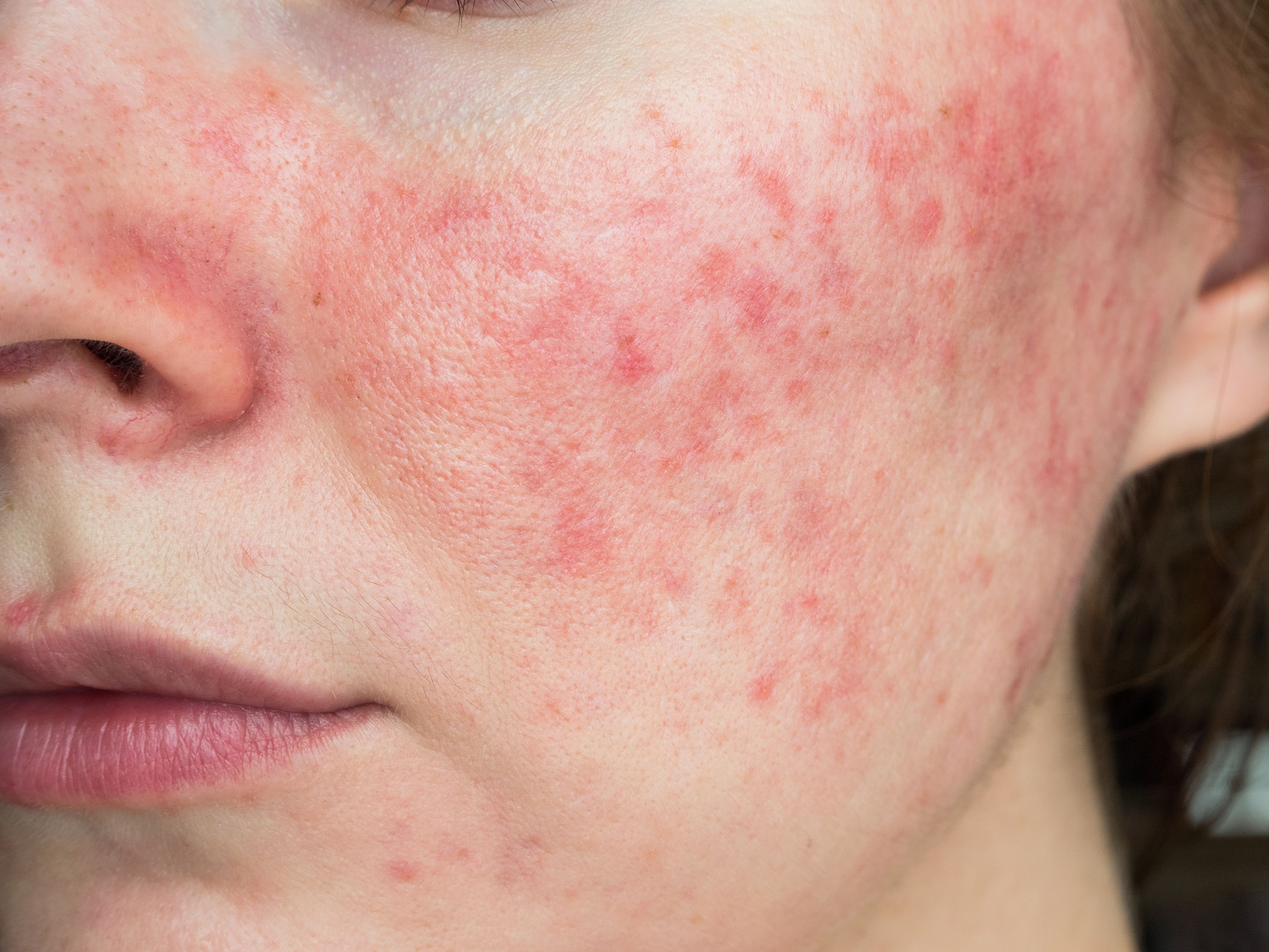- Case-Based Roundtable
- General Dermatology
- Eczema
- Chronic Hand Eczema
- Alopecia
- Aesthetics
- Vitiligo
- COVID-19
- Actinic Keratosis
- Precision Medicine and Biologics
- Rare Disease
- Wound Care
- Rosacea
- Psoriasis
- Psoriatic Arthritis
- Atopic Dermatitis
- Melasma
- NP and PA
- Skin Cancer
- Hidradenitis Suppurativa
- Drug Watch
- Pigmentary Disorders
- Acne
- Pediatric Dermatology
- Practice Management
- Prurigo Nodularis
- Buy-and-Bill
News
Article
An Up-to-Date Review of Rosacea in Childhood and Adolescence
Author(s):
Key Takeaways
- Pediatric rosacea is underdiagnosed, with initial manifestations often appearing between ages 4 and 8, predominantly in light skin types.
- Pathogenesis involves genetic predisposition, immune dysregulation, and microbial interactions, with Demodex mites playing a significant role.
Researchers behind a recent review shared expert insights, treatment guidelines, and differential diagnosis techniques for pediatric rosacea.
Rosacea, a chronic inflammatory skin condition primarily recognized in adults, is often underdiagnosed in children and adolescents.1 Despite similarities in symptoms and triggers, pediatric cases of rosacea present unique diagnostic and therapeutic challenges. A recent review aimed to provide an unbiased, evidence-based, updated overview of rosacea in childhood and adolescence, emphasizing epidemiology, pathogenesis, clinical manifestations, differential diagnoses, and treatment options.2
Epidemiology and Predisposing Factors
While adult-onset rosacea is well-documented, pediatric cases remain underrecognized. Data on incidence and prevalence in children and adolescents are sparse, with the review finding that initial manifestations often appear between ages 4 and 8. The condition is more frequently diagnosed in individuals with light skin types (Fitzpatrick I-II), but cases in darker skin types suggest the possibility of underreporting due to diagnostic challenges. Gender distribution appears largely equal, though researchers found severe ophthalmic involvement may be more common in women.
Pathogenesis
The review stated the pathogenesis of pediatric rosacea mirrors that of adults, involving genetic predisposition and environmental triggers. Dysregulation of the innate and adaptive immune system, neurovascular instability, and microbial interactions are central to disease development. Notably, Demodex mites, which colonize the skin post-adolescence, have been implicated in triggering immune responses. Increased expression of cathelicidins and matrix metalloproteases, coupled with Toll-like receptor (TLR) activation, contributes to inflammatory cascades, leading to the characteristic symptoms of rosacea.
Clinical Presentation and Diagnosis
Rosacea in children and adolescents manifests in various subtypes, according to the review, including erythematotelangiectatic, papulopustular, periorificial, granulomatous, idiopathic facial aseptic granuloma (IFAG), and ophthalmorosacea. The absence of internationally standardized diagnostic criteria for pediatric rosacea necessitates reliance on clinical features. Commonly observed signs include flushing, persistent erythema, papulopustules without comedones, telangiectasias, and ocular symptoms such as conjunctivitis and blepharitis. Given the frequent overlap with other dermatoses, researchers stated differential diagnosis is critical.
Differential Diagnoses
Pediatric rosacea shares clinical similarities with acne vulgaris, perioral dermatitis, seborrheic dermatitis, and demodicosis. Conditions such as systemic lupus erythematosus, granulomatous disorders, and infectious dermatoses must also be considered. In cases of isolated ocular involvement, the review stated differential diagnoses include allergic conjunctivitis and bacterial blepharitis. Histopathological evaluation is seldom required but may aid in ruling out alternative conditions.
Therapeutic Approaches
Treatment of pediatric rosacea is adapted from adult protocols while considering age-specific safety concerns. General management noted in the review includes avoidance of known triggers such as UV exposure, heat, and irritating skincare products. Topical therapy is preferred for mild to moderate cases, whereas systemic agents are reserved for severe manifestations.
Topical Therapies
Metronidazole: Commonly used for papulopustular and periorificial rosacea, though not officially approved for pediatric use.
Azelaic Acid: Effective for reducing inflammation but may cause transient irritation.
Ivermectin: Demonstrates efficacy in treating inflammatory lesions, particularly in Demodex-associated cases.
Calcineurin Inhibitors: Used as steroid-sparing agents, particularly in steroid-induced rosacea.
Systemic Therapies
For severe or refractory cases, reviewers stated systemic antibiotics such as macrolides (azithromycin, erythromycin) and tetracyclines (doxycycline, minocycline, permitted from age 9) are effective. Oral isotretinoin has been used successfully in severe cases but remains an off-label option requiring careful monitoring. Oral ivermectin has shown promise in cases with Demodex overproliferation.
Ophthalmorosacea Management
The review stated ophthalmic involvement necessitates an interdisciplinary approach involving dermatologists and ophthalmologists. Standard treatment includes lid hygiene, artificial tears, and topical antibiotics (azithromycin, moxifloxacin). Systemic tetracyclines or macrolides are frequently required for prolonged disease control.
Prognosis and Long-Term Outcomes
Researchers found most pediatric cases respond well to treatment, with many achieving long-term remission. However, it remains unclear whether early-onset rosacea predisposes individuals to recurrence in adulthood. The review suggested further longitudinal studies are needed to assess long-term disease trajectories.
Conclusion
Pediatric rosacea is an underrecognized condition requiring increased clinical awareness. Early diagnosis and appropriate intervention can prevent complications, particularly ocular involvement. Treatment remains largely off-label, with the review emphasizing the need for continued research into age-specific therapeutic strategies. Researchers suggested dermatologists and pediatricians should collaborate to enhance recognition and optimize management in this unique patient population.
References
- Kroshinsky D, Glick SA. Pediatric rosacea. Dermatol Ther. 2006;19(4):196-201. doi:10.1111/j.1529-8019.2006.00075.x
- Korsing S, Stieler K, Pleyer U, Blume-Peytavi U, Vogt A. Rosacea in childhood and adolescence: A review. J Dtsch Dermatol Ges. Published online March 22, 2025. doi:10.1111/ddg.15693







